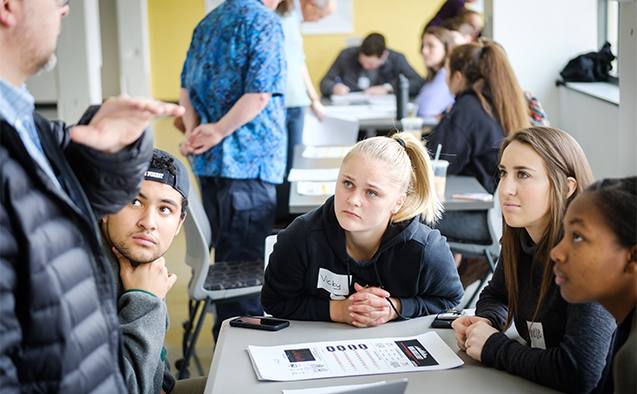For women, class makeup may influence interest in STEM studies

Highlights
- New research shows peer ability, gender effects and role-model effects in the first college class taken in engineering can impact whether a student persists in the field.
- Women make up roughly 20% of bachelor's degrees awarded in engineering.
- The results of the research can be applied to STEM studies generally.
Who is in their first class may lay the foundation for more women to pursue engineering as a major, according to new research by Wake Forest University economics professor Amanda Griffith.
“In the STEM fields, engineering in particular attracts fewer women,” said Griffith.
“Our research suggests that the makeup of the students in gateway college STEM classes may influence who chooses to pursue a degree in the field.” Amanda Griffith, associate professor of economics
The study examined how peer ability, gender effects and role-model effects in the first class taken in a major can impact a student’s interest in persisting in STEM field study. The research article, “First Impressions in the Classroom: How do class characteristics affect student grades and majors?” is available online in the journal Economics of Education Review.
With women making up only about 20 percent of bachelor’s degrees awarded in engineering, the findings may help colleges create environments that can impact student outcomes and choice of major.
Using data on students who enrolled in an engineering program at a large, public, Midwestern, research-intensive university, Griffith and co-author Joyce Main, a professor at Purdue University, examined how students’ experiences in their first required course in engineering, taken in the first semester of college, influenced their outcomes. The students studied were randomly assigned into sections of the course.
By looking at the grade received in the course and whether a student continued to study engineering and using various models of peer effects, the research outcomes suggested class composition may affect student achievement and decision-making.
Findings include:
- An increase in the percentage of female students in a course improves persistence in the major for all students, male and female.
- For underrepresented minorities, an increase in the percentage of students from this group improves grades for minority students.
- An increase in students in the bottom of the ability distribution has a negative impact on students (particularly for fellow lower-ability students) with regards to their interest in continuing engineering studies.
- An increase in top-ability students improves everyone’s grades, including lower-ability students.
“Some amount of variation in student ability seems to benefit everyone in the class in terms of grades and persistence in the field, but too many students either at the higher or lower ability level may be problematic,” said Griffith. “In a class with too many lower-ability students, there are more peers of that similar ability level to collaborate with rather than those students benefitting from working with top-ability students.”
Griffith said the findings highlight that policies and class composition can influence student achievement and may have unintended consequences. “There are ways to arrange classroom characteristics that may encourage more women to pursue careers in engineering, and that is a benefit to all students and the field in general.”
Griffith researches the economics of higher education, with a particular focus on students’ choices of type of college and major, and how this affects their labor market outcomes.
Categories: Research & Discovery
Wake Forest News
336.758.5237
media@wfu.edu
Meet the News Team
Headlines
Wake Forest in the News
Wake Forest regularly appears in media outlets around the world.





